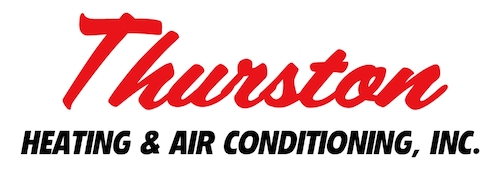We all like saving money on our monthly utility bills, but it just so happens there’s a way to keep costs down, even when you’re out of the house.
It starts with your thermostat. By using automatic schedules, you can structure its daily schedule around your personal preferences. You can create a number of automated temperature settings for when you’re at home, away or even when you’re asleep.
By trying a few of these schedules, you can enjoy comfy temperatures while keeping more money in your pocket. Take a look at a few ways your thermostat can be a source of energy savings:
While at Home
When you’re home, you want a nice range of pleasant temperatures. It’s only natural to want your thermostat lower in the summer while inside to make the most of the cool air.
But the most energy-efficient temperatures for the summer is usually between 78 and 80 degrees Fahrenheit. With this adjustment, you’ll avoid the worst of summer while still lowering your monthly energy bill.
While Away
When setting the temperature for when you are out of the house in summer, it’s extremely common to move the thermostat higher than normal.
For some homes, you can set the thermostat to temperatures as high as 88 degrees while no one is home and then lower it back to the sweet spot of 78-80 degrees when you or a family member return. This way, your air conditioning system isn’t working around the clock to keep an empty house cool.
While Sleeping
For a full night’s rest during summer weather, you want a nice cool temperature. You should try and keep things between 68-72 degrees Fahrenheit. This will keep you from getting too hot or too cold at some point overnight.
Other Ways to Use Less Energy:
- Install a smart thermostat: Using a smart thermostat in the summer helps save money on energy costs by automatically adjusting to your lifestyle and personal preferences. They can lower the temperature while you are home or sleeping, before allowing it to get a little warmer when no one is home. With models like the Lennox iComfort, you have the ability to remotely access and change the temperature through your smartphone, tablet or laptop. Scheduling smart thermostat installation in your Kearney home is an effortless way to set the correct temperature even when you aren’t home.
- Update your existing HVAC system: A new HVAC system can save money in the long run. With greater energy efficiency, lower utility bills won’t be far behind since it requires less energy to reach your preferred temperatures. Air conditioning installation in Kearney is a great way to beat the heat in the summer.
- Schedule annual AC maintenance: Hiring a skilled professional to perform regular air conditioning maintenance in Kearney can have a serious effect on your total monthly energy use. If you stay on top of cleaning key components like the coils, checking for damage and clearing air vents of dust and debris, you may notice your HVAC system run more efficiently. More efficient operation reduces strain on key parts and lowers operational costs, lowering total energy use and eventually the total monthly bill.
- Replace your air filter regularly: Regularly changing the air filters in your HVAC system saves money by improving airflow. When filters are old and less effective, your air conditioner will have to work harder, and the added strain may impact the system’s life span and result in breakdowns.
- Check your attic insulation: Insulation is a vital part of maintaining an energy-efficient home, securing the hot air outside and the cool air inside through summer. The North American Insulation Manufacturers Association (NAIMA) recommends that homes in the southern United States should possess at least 13-14 inches of insulation, while those in northern U.S. states should have 16-18 inches.
- Check your ventilation: Leaky ductwork can raise your energy bills much more than 20 percent, plus it can potentially allow harmful emissions from your water heater, clothes dryer and other appliances to get into the atmosphere of your home. Watching for signs of leaks and sealing them can address both concerns.
- Seal all other leaky spots in your home: Sealing up other leaks in your home with caulk, foam sealant or weather-stripping can help keep it cooler on hot summer days. Don’t forget to check for any gaps around windows, doors and even outdoor fixtures. Devoting time and effort to sealing leaks now can help you save a lot in the long run.
